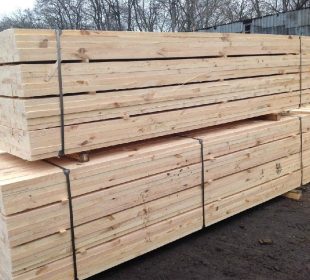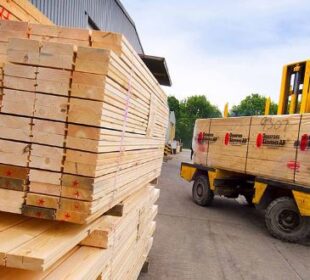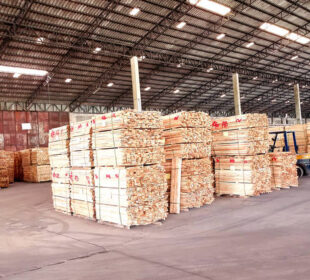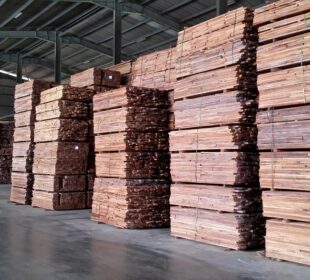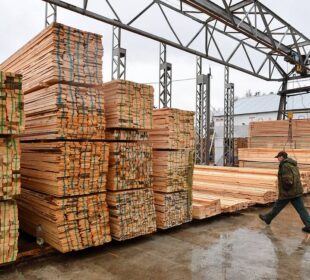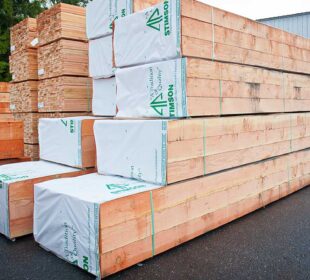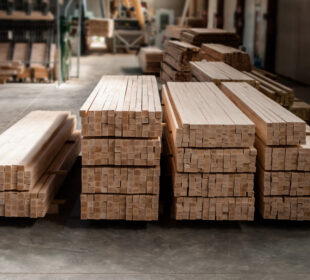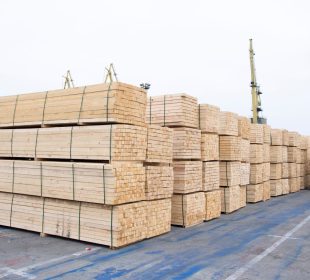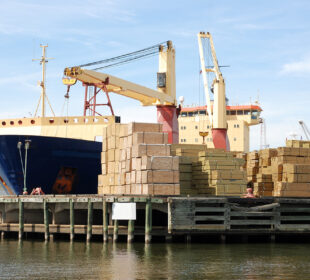Insights into the status of the UK sawn hardwood market came from a webinar organised by the London Hardwood Club in early June, featuring speakers from the UK tropical import sector alongside American and European hardwood producers.
The event, which attracted 48 participants, covered pandemic impacts, species supply and demand trends, UK market acceptance of further processed hardwood products and market outlook.
Despite the COVID 19 lockdown measures, in place now in the UK for nearly two months, there are some more positive signs emerging in the UK hardwood market. Several seminar participants said that the market remained ‘some way off the norm’, but that business was picking up.
“At the start of the Covid-19 lockdown we were looking at the sharp end of doing very little at this point and in April sales were down 60-65%,” said one importer.
“But through May into June we’ve seen renewed activity and we’re now back to around 60% of normal levels.” Another said they had gradually upped activity: “We closed for two or three weeks, but now we’ve got 50% of staff working. We don’t see sales returning to 100% in the near future, but we hope to have all our people back by the end of the government furlough programme in October.” Focusing on West African supply, Guy Goodwin of NHG said that, bar a temporary shutdown in Ghana, the pandemic had not to date significantly hit production.
Prices for red hardwoods also remained firm, underpinned by renewed buying in China and Vietnam.
Mr Goodwin anticipated mills ‘in the tiers below mainstream producers’ being most affected by wider contraction in demand, leading to some price cutting. Cancelled orders had also seen some ‘distressed parcels’ coming on to the market.
However, he did not anticipate the tropical price slump and capacity contraction seen after the 2008 economic crash. “Mills learned the lesson from that and became more cautious and reactive to the market situation, so there’s less over-production,” he said.
“Also, many concession holders are at the end of 25-30- year harvest cycles, so forest being worked is less rich in commercial species. We expect this to keep prices firm, particularly for kiln-dried, certified, EUTR-compliant timber.”
For the European hardwood supply sector, Alex Boisson of Italian-based oak producer Florian Group, said the pandemic had reduced demand internationally and the outlook was uncertain.
The Asian market was particularly hard hit and overall the post-pandemic so-called ‘new norm’ had yet to take shape. “Business is moving, but not as we knew it,” he said. “Requests are day to day.”
Florian had faced mill operational challenges due to COVID-19, but its key concern was the three month shutdown in harvesting in Croatia and Hungary, where it also has mills in addition to those in Italy and France. Resulting tight supply was underpinning log prices, which, Mr. Boisson forecast, would lead to lumber price inflation, despite demand levels.
He also said that it was imperative to develop the market for the ‘central part of the log’. Hardwood sawmills need to sell lumber from the entire thickness and grade spectrum of the log, both to turn a profit and avoid finished stock build up and associated bottlenecks and overheads.
Demand for lower grade European lumber had been hit by the pandemic, notably in South East Asia and this compounded the effect of deterioration in European raw material quality.
“In the last 10- 15 years European logs have declined in quality and diameter,” said Mr. Boisson. “Previously the resource was yielding 30% A quality logs. Today that’s down to 15-20%. We increasingly need to be creative and find an outlet for lower grades, perhaps through modification, or engineering and new applications. It’s key to how we survive as sawmills.”
On the UK, Mr. Boisson said there was more hardwood stock on the ground than elsewhere in Europe, the consequence of ‘excess buying’ prior to lockdown, with importers hedging against anticipated logistical problems.
The market, he added, was also historically more resistant than European neighbours to value-added, further processed products. By contrast, German window producers, for instance, tended to use fingerjointed and laminated hardwood exclusively.
This sentiment was echoed by a UK timber importer who noted that “UK end users are conservative. They’re wary of anything new and not particularly fashion-led.” However, there were signs of UK end users coming around.
Mr Boisson commented that “five years ago, our engineered exports to the UK were zero. Today they comprise 25% of the total. We expect the trend to continue and that we’ll be selling less solid, thick lumber to the market.”
Speaker Dennis Mann, export sales manager of Baillie Lumber, a leading US hardwood exporter, emphasised that the poor prospects for lower grades was also a major issue facing the American hardwood industry. “Our key challenge is what to do with the centre of the log. Right now, there’s just no home for sleepers, cants, truck deck flooring, pallet timber, or chips for paper mills,” said Mr Mann.
“A lot of these products are tied in with transportation of goods and as that’s significantly reduced, so has demand.” Mr. Mann suggested that as economies emerge from pandemic lockdown more widely, this industrial lumber logjam should gradually ease, but the timescale was uncertain and, while unresolved, it could cause further problems.
Difficulties in moving lower quality material inevitably impact supply of better grades and Mr Mann predicted tightening supply in 1.5-2” and thicker white oak in coming months.
Turning to the UK, Mr. Mann said it had not only remained the U.S. hardwood sector’s biggest European market, and fourth biggest export market overall, it was also among its most consistent. Its annual U.S. imports averaged around $83 million for the last four years, comprising 75-80% white oak, tulipwood and walnut. One question from a webinar participant was on future supply of American ash given the emerald ash borer infestation. Mr Mann responded that there were still areas of pest-free forest, particularly away from roads. “Ten years ago we thought it would all be gone by now,” he said.
“Today we estimate there’s still another three to five years supply of viable, unaffected timber.” Mr. Mann was also asked about U.S. supply of FSCcertified and said demand for it was mainly from the UK.
“FSC requests are 90- 95% UK, with inquiries monthly. From elsewhere we’ll get two or three every few months.” One importer saw increasing prospects for modified temperate hardwoods to widen applications for less durable material. “We’ve done a number of successful projects in thermally modified U.S. tulipwood, with another significant one in the pipeline,” they said. “We think it’s got a good future.”


